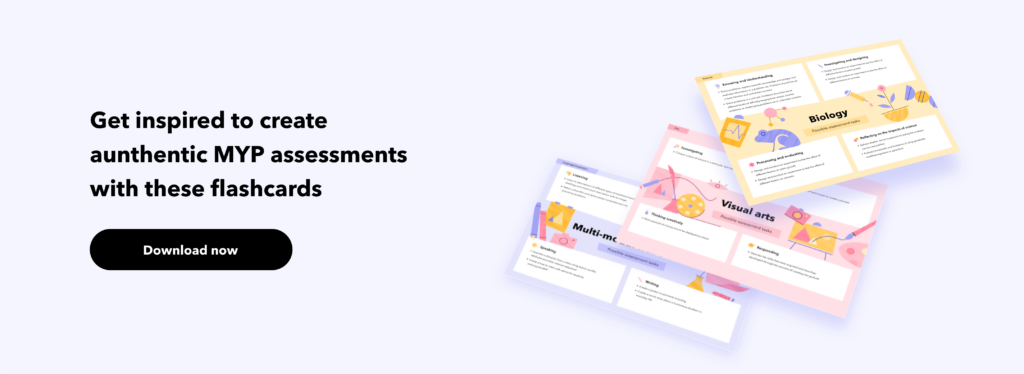Each MYP objective has associated descriptive criteria that can be used to evaluate students’ work. Using descriptive criteria to monitor and assess students’ progress is known as criterion-related assessment. To get a visual overview of MYP criteria, check out these exciting handouts:

One way to understand what criterion-related assessment is (and isn’t) is to consider the difference between qualitative and quantitative assessment data:

Criterion-related assessment makes assessment fairer because the criteria are shared with students in advance, so they know what is expected of them in any given task. It also makes assessment more useful, because students and teachers get descriptive feedback about the quality of their work.
Consider this example below of a science lab report: one assessed using the qualitative rubric for science criterion C (Processing and evaluating) and one assessed using a quantitative mark scheme.

In both cases, students get some indication of what they did well (presenting the data in a data table and graph) and where there was room for improvement (the analysis and conclusion). However, the mark scheme doesn’t help students to understand what to do in order to improve their work the next time they write a lab report. With the rubric, students can look at the level that they achieved and compare it to the descriptor for the next level up in order to get an indication of how to improve their work. In this example, the student reached the level 4 descriptor for their conclusion: outline the validity of a hypothesis based on the outcome of a scientific investigation. They can refer to the rubric to see that they could reach a higher level by discussing the validity of a hypothesis based on the outcome of a scientific investigation (level 5-6) or evaluating the validity of a hypothesis based on the outcome of a scientific investigation (level 7-8).
For interesting ideas of the types of tasks that can be designed for each MYP criteria across subjects, check out these flashcards!





